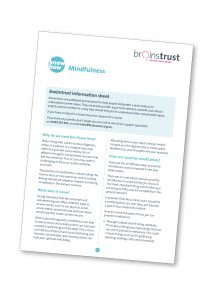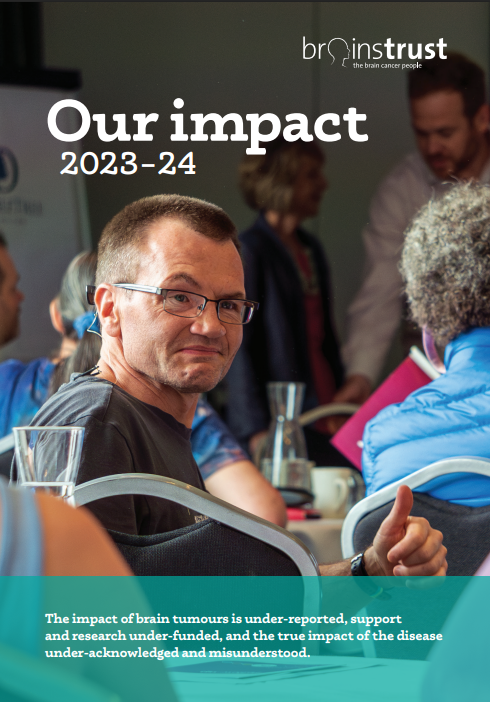Mindfulness
When living with a brain tumour, you may often find yourself consumed by lots of different thoughts and priorities, leaving you overwhelmed. Mindfulness for brain tumours can help you feel less overwhelmed. Allocating time in your day to being mindful can give you the opportunity to create space between you, your thoughts and your reactions.
 Practicing mindfulness
Practicing mindfulness
Mindfulness is about taking time to focus on one particular task or activity, feeling relaxed yet awake and aware, and being completely present in the moment. When practiced regularly, mindfulness can help to reduce stress and anxiety, which can help your emotional wellbeing and aid sleep. This How How explores ways that you can practice mindfulness when living with a brain tumour.
Putting your day to bed
There is a transition point in every day when the day’s activities end and the evening begins. Use this time to think about the day that has just passed. Find a quiet space to reflect. In a notebook, take fifteen minutes to reflect on the following:
- What have you achieved today?
It doesn’t matter how small, note this down. Be kind to yourself and champion yourself. Who else deserves to be championed? Make sure you let them know. - What loose ends are there?
You might not be able to tie them all up here and now; just acknowledge that they are there. When might you deal with them? Who can help you? Once you have done this, put them to bed until you are ready to deal with them. - What might stop you sleeping well tonight?
What positive actions might you take to deal with this? One of the things you can do with negative thoughts is to accept them, acknowledge that they are there, and then let them go. This is the brain processing. Just let them go, and bring your mind back to the task in mind.
This ritual of putting your day to bed gives you space to gather your thoughts, get them down on paper and out of your mind, so you can have a restful evening.
Struggling with brain tumour fatigue? We can help. Click here to find out more.
Creating a sanctuary

Think about creating a space that truly is a sanctuary for you. What does this look like? It doesn’t have to be exotic, expensive or a room on its own. It could be turning off the TV and turning on some relaxing music instead. It could mean stopping what you are doing to make eye contact with your children while they talk to you. It could be saying no to some plans so that you can spend time together as a family, or time on your own. A sanctuary is a space where you can breathe, take a break from performing, and where you can be who you are in a safe place.
Pleasurable activities
In the busyness of our lives, sometimes we lose sight of pleasure. We are so busy trying to sort, manage, orchestrate, drive that we forget that we need a balance. Make a list of things you like to do that make your heart sing. These will give you energy. Many are actually quite small things, like sitting with a favourite piece of music or feeling the sun on your face, listening to birdsong or having a cuddle.
Write yours down. Look at them often to remind yourself and promise to do one every day.
- Phone a friend
- Paint your nails
- Watch a favourite film
- Treat yourself to something new
- Have a massage
- Light a candle
- Curl up with a good book
- Have clean sheets on the bed
- Play word games
- Thump a cushion
- Enjoy a walk in the sun
- Declutter a cupboard
- Sit by the sea
- Stretch
- Watch people from a café
- Make a list
- Go out for dinner or have a takeaway
- Promise yourself to do something new this week
- Walk a dog
- Have a bath
- Watch a comedy
- Look at photographs
- Cuddle someone, be cuddled
- Share a smile
- Surf the internet
- Meet a friend for coffee and cake
- Wear something cosy
- Dance
- Have someone wash your hair
- Clear out an in-tray
- Tell someone what is special about them
- Plan a weekend away
- Bake a cake
- Plan a get together with friends










